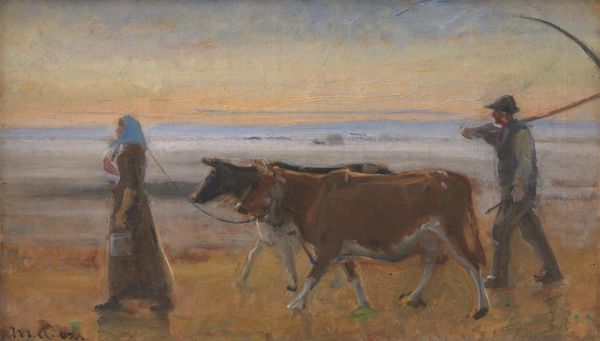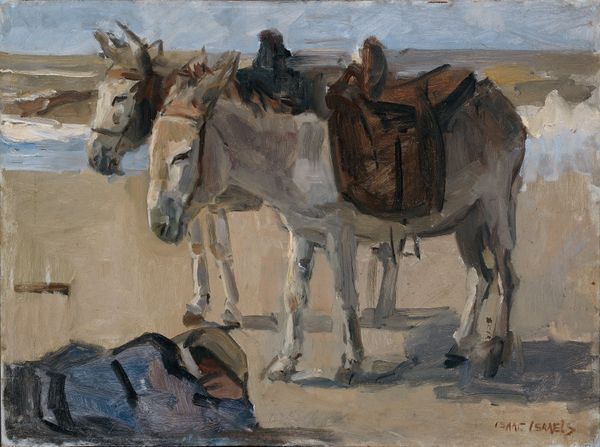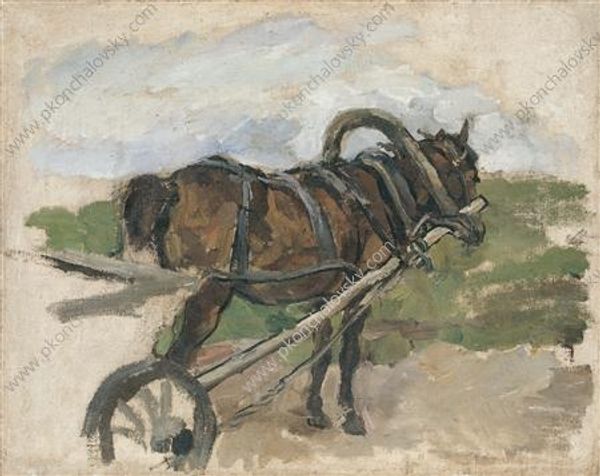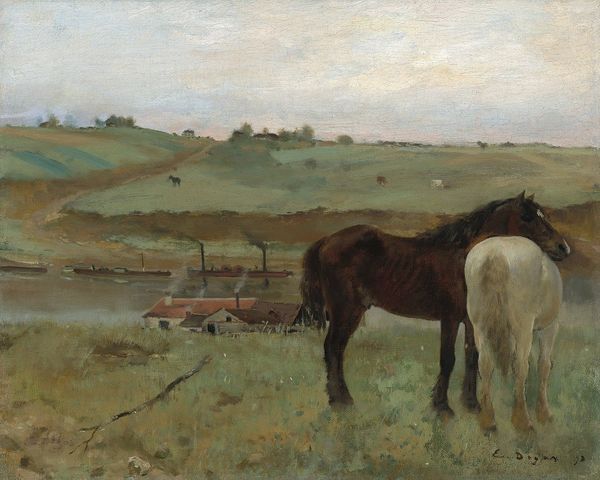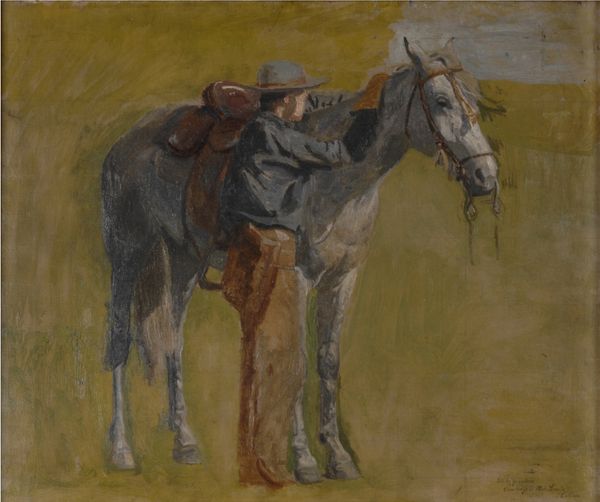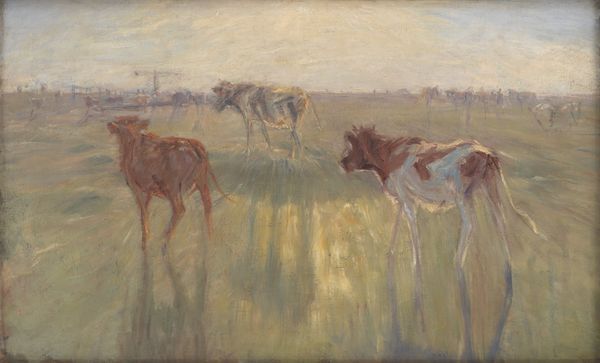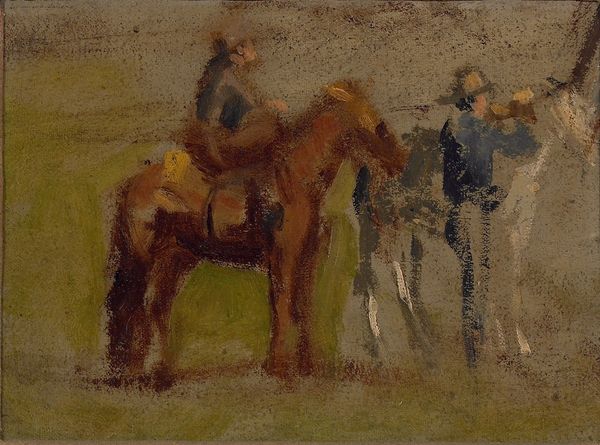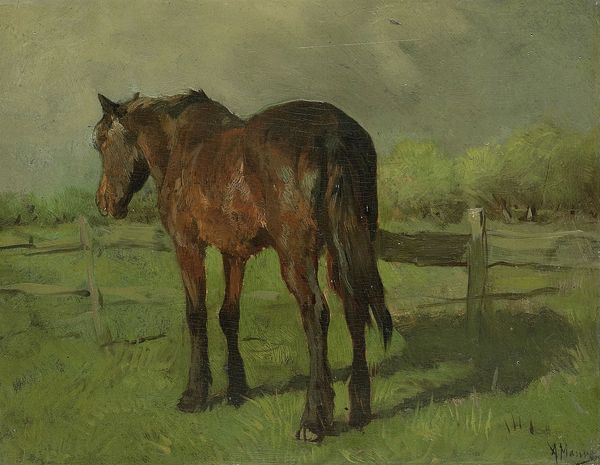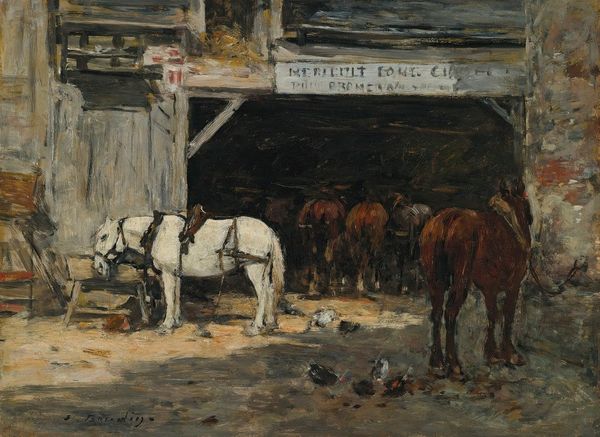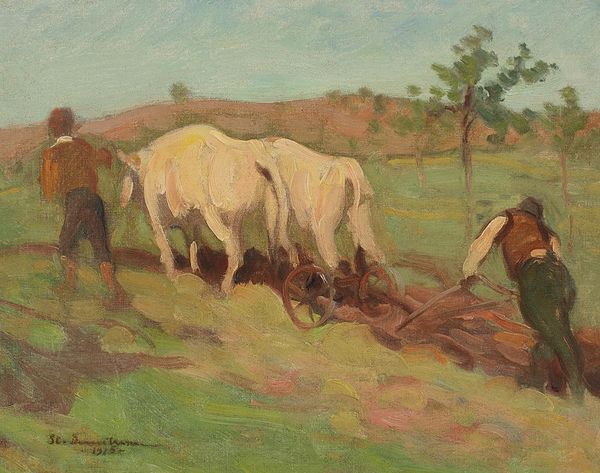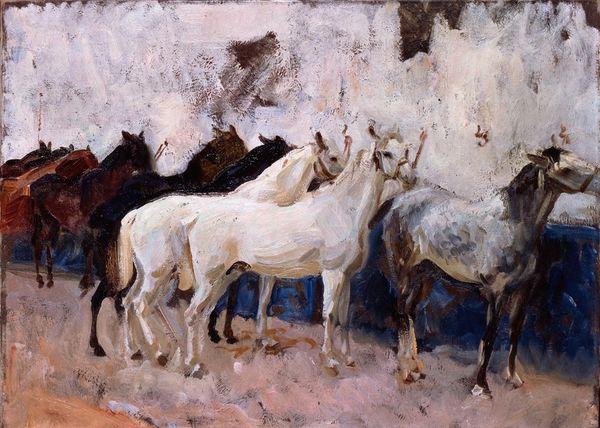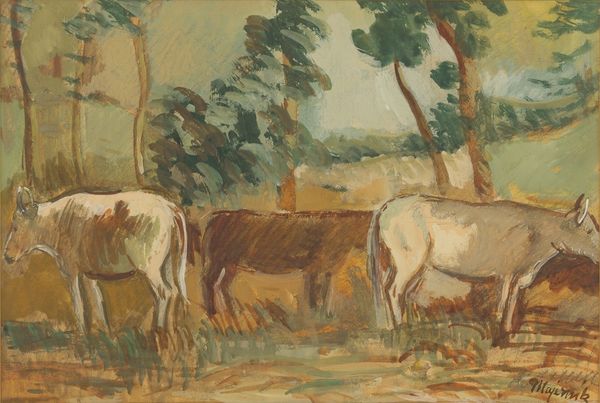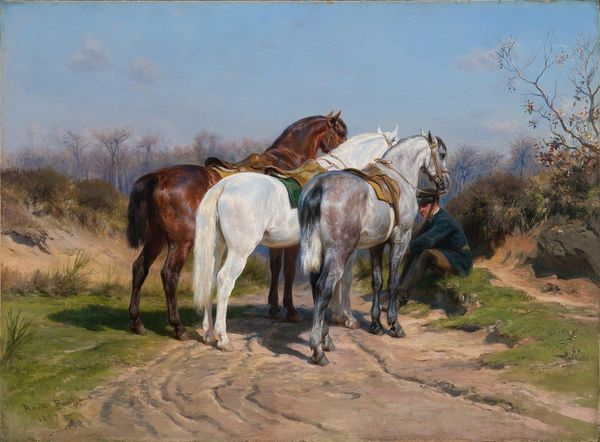
Dimensions: height 26.9 cm, width 37.3 cm, thickness 1.6 cm, depth 10 cm
Copyright: Rijks Museum: Open Domain
Curator: G.H. Breitner painted this canvas, A Brown and a White Horse in Scheveningen, sometime between 1880 and 1923. It resides here with us at the Rijksmuseum. Editor: My first impression is the thickness of the oil paint, applied with clear purpose. You can almost feel the weight and texture. There's a quiet strength in these animals; very down to earth. Curator: Breitner, a key figure in the Amsterdam Impressionism movement, had a keen interest in the working class and urban life. He certainly brings that lens to bear on our understanding of this subject and scene. I wonder what those animals' everyday labor consisted of and whether they were just used for transport or as warhorses. Editor: Absolutely. Consider the harness, the bits, the tools. Someone made those items. I think this piece presents the opportunity to question assumptions of "high" versus "low" art, or even how we define labour. Who feeds and cares for the horses and does this change when they serve in wars? Curator: These considerations are essential when attempting to interpret not only the piece itself, but also its importance as a part of our collection, reflecting an entire societal fabric that enabled its creation and interpretation by future audiences. I agree there are definite labour-centered messages. What kind of context would viewers from Breitner's period have projected to such images of the warhorse? I am assuming horses in Scheveningen served for naval transportation or as military backup at times of political conflict, too. Editor: And to what end? If we observe closely, one can appreciate the various textures; Breitner really was a craftsman with a loaded brush. However, such textures served war efforts with no consideration. Such labor is wasted or unethical, however artistic or visually delightful. Curator: It's fascinating to think about how a single painting can embody these tensions—the celebration of skill, while the work itself might represent participation in larger systemic conflicts that contradict ethics. It is also key to remember that it could highlight the nobility of working animals—work which made him earn money for further exploration and observation. Editor: Exactly. There are layers of intention and historical consequence to uncover when regarding a piece of this kind. Curator: Precisely, a conversation that makes this, to me, such a special work.
Comments
No comments
Be the first to comment and join the conversation on the ultimate creative platform.
